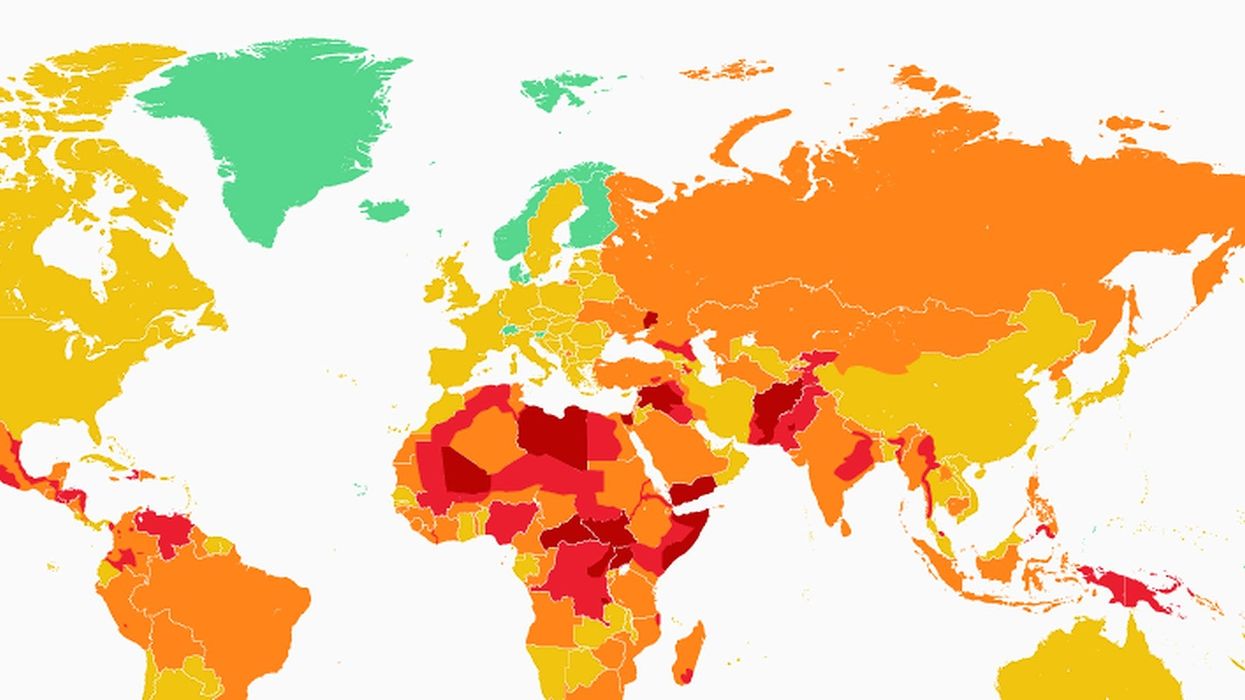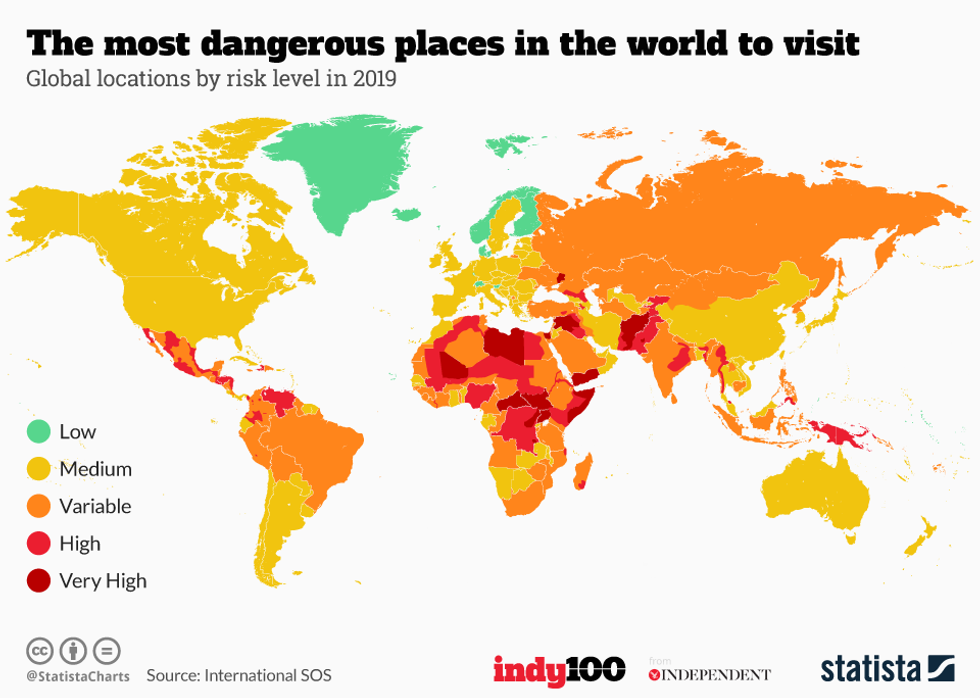
Coronavirus has already had a huge impact on the world. And it remains to be seen what "normal" is going to look like on the other side.
With planes grounded across the world, and millions of travel plans cancelled, one thing that people will be desperate to do once it's safe is go abroad.
But where are the safest places to go?
Right now, it's impossible to tell what the world is going to be like when the pandemic is over. It's very much a case of taking things day by day. We've also seen that the pandemic is having an effect on safety, with a decrease in buglary and shoplifting, but an increase in reports of domestic violence. In cities such as Paris and Johannesburg there's been riots and in America there's been protests over stay-at-home orders.
According to a map designed for travellers, the most dangerous places on Earth before the pandemic hit were Libya and Somalia.
The annual interactive 'Travel Risk Map', published in late 2019,revealed the countries where people are most likely to have trouble when it comes to road safety, security and medical matters.
By contrast, the safest places were Finland, Norway and Iceland.
Libya and Somalia both rank lowly in each of the three categories in the study – by international medical and security specialists International SOS – along with Afghanistan and Venezuela, meaning they were the most dangerous before the world was turned upside down.
When it comes to health, countries the list said had the highest risk of contracting medical issues or disease include African nations Niger, Guinea, Sierra Leone, Liberia, South Sudan, Eritrea and the Central African Republic. Though it's worth noting that Africa in particular has not yet become a coronavirus hotspot.
Places that were thought to have a low risk of disease are most of those in Europe, Canada, the US, New Zealand, Australia, South Korea and Japan. Which is interesting because America has the highest coronavirus and countries such as Italy and the UK have seen over 20,000 deaths so far.
For security, researchers evaluated the threat posed to travellers by political violence (including terrorism), social unrest and violent and petty crime.
Countries with an extreme risk to travellers' safety include Afghanistan, Syria, Yemen, Iraq, Somalia, Libya and parts of Nigeria.
Places where security risks were deemed insignificant are Norway, Greenland, Finland, Iceland, Switzerland and Slovenia.
H/T: Daily Mail














